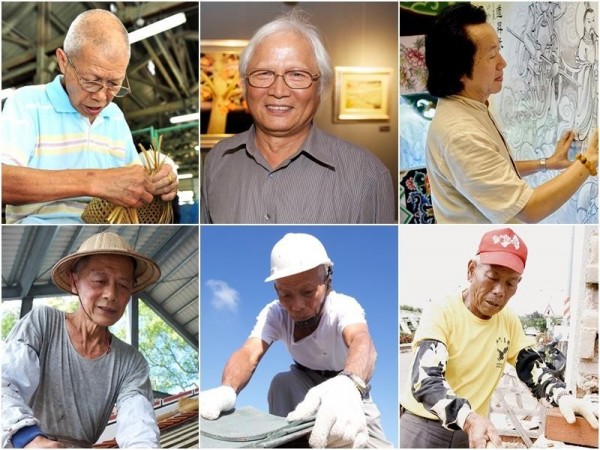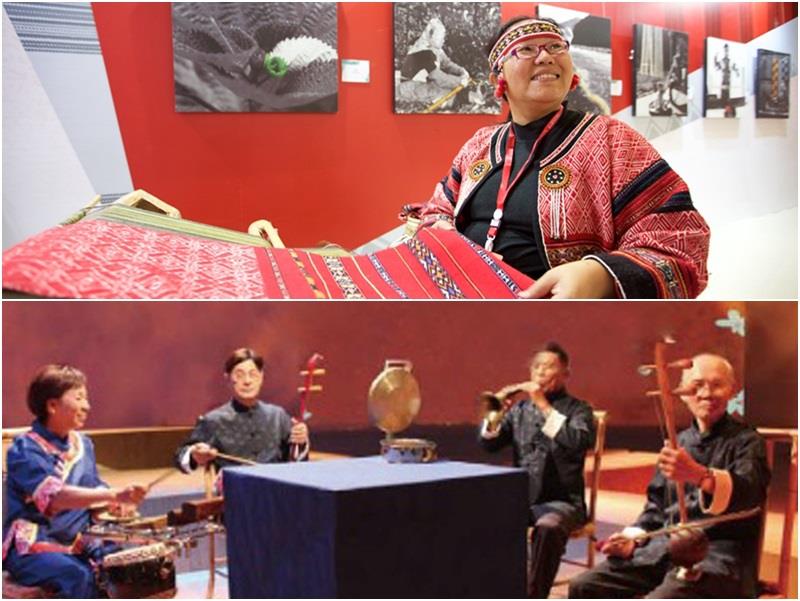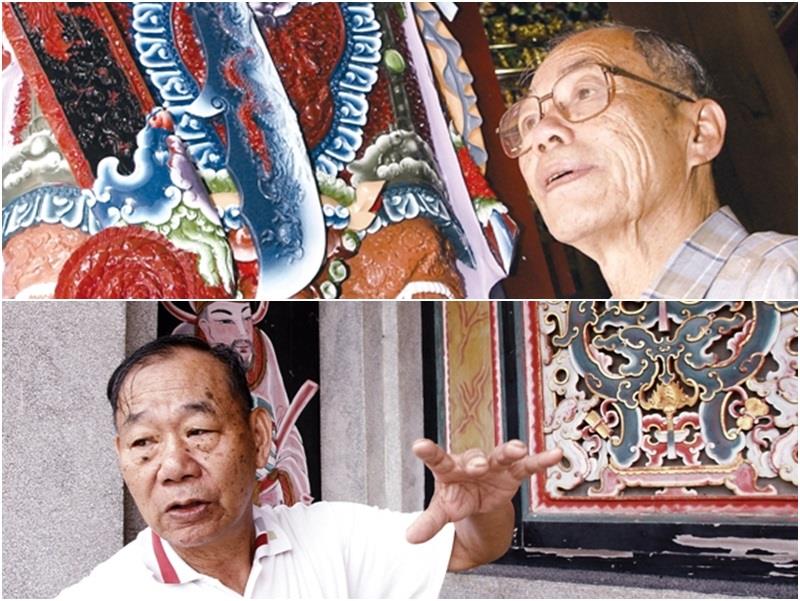The Ministry of Culture announced 10 new additions to the nation's "national living treasures” register - a list of individuals or groups who embody important cultural properties and skills - on June 23.
Akin to the intangible cultural heritage program by UNESCO, Taiwan's "national living treasures” designation recognizes living artists and important groups for their role in preserving the nation's cultural heritage. Since 2009, 39 individuals and 7 groups have received the coveted title.
This year, 9 individuals and one group were added to the national register:
- Bamboo lacquer artist Li Jung-lieh (李榮烈)
- Bamboo weaver Chang Hsien-ping (張憲平)
- Atayal textile artist Yuma Taru (尤瑪‧達陸)
- Temple artwork restorer Liu Chia-cheng (劉家正)
- Traditional masonry expert Fu Ming-kuang (傅明光)
- Traditional masonry expert Liao Wen-mi (廖文蜜)
- Traditional masonry expert Chuang Hsi-shih (莊西勢)
- Carpentry master Weng Shui-chian (翁水千)
- Carpentry master Liang Shao-ying (梁紹英)
- Meinong Hakka Bayin Music (美濃客家八音團)
Li is the sole living practitioner of "bamboo lacquerware,” the practice of applying lacquer to woven bamboo, whereas Chang creates detailed wickerwork with intricate patterns akin to "bamboo embroidery.”
Taru visited more than 200 Atayal households in her quest towards preserving her tribe's weaving and dyeing knowledge. Similarly, Liu has traveled to countless temples in Taiwan and across Asia to restore deity portraits, wall murals, and temple decorations.
The three masons - Fu, Liao, and Chuang - are renowned for their knowledge of traditional applications of plaster in architecture. Their particular area of expertise is known as "tile work (瓦作),” in which the solid roof construction gives in neither to monsoons nor typhoons.
The two carpentry masters - Weng and Liang - are the new preservers of traditional Taiwanese wood-frame construction following the death of late master Liao Chih-te (廖枝德). Wood-frame structural carpentry (大木作) was used in the construction of most temples and public buildings in early Taiwan.
Meinong Hakka Bayin Music, the sole group to be inducted as a "national living treasure” this year, is a quartet of senior musicians who seeks to pass on the traditional Bayin music of the Hakka people. Using suona, percussion, and string instruments, the quartet performs at major Hakka festivities and ceremonies.
A ceremony will be held on July 2 in Taichung to formally inaugurate the ten new "national living treasures.”

Top row, from left to right: Bamboo lacquer artist Li Jung-lieh, bamboo weaver Chang Hsien-ping, and temple artwork restorer Liu Chia-cheng. Bottom row, from left to right: Traditional masonry experts Fu Ming-kuang, Liao Wen-mi, and Chuang Hsi-shih.

Atayal textile artist Yuma Taru (top) and Meinong Hakka Bayin Music (below).

Carpentry masters Weng Shui-chian (top) and Liang Shao-ying (below).